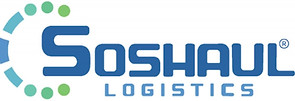CSA Point Violation Examples
- Dr. Sean Goffnett & Samantha Allen
- Apr 2, 2024
- 4 min read

What are CSA Scores?
The Compliance, Safety, and Accountability (CSA) is a compliance and enforcement program that follows the standards set by the FMCSA to improve safety on the road. Every CDL driver operating under a USDOT number is given a CSA score consisting of roadside inspection data.
If drivers have violations in any of the 7 Behavior Analysis and Safety Improvement Categories (aka BASICs) shown below their scores can be negatively impacted.
BASIC Categories:
Unsafe Driving – moving violations and auto crimes. This could include things like speeding, reckless driving, improper lane change, and so on.
Crash Indicator – carrier is repeatedly involved in state-reported crashes.
Hours of Service Compliance – driving while out of compliance with hours-of-service requirements.
Vehicle Maintenance – issues with maintaining a vehicle like brakes, lights, or even shifting loads.
Controlled Substance or Alcohol – being in possession of or driving under the influence of illegal prescription drugs. This also includes the improper use of over-the-counter drugs.
Hazardous Materials Compliance – not having proper paperwork or securely packaging and labeling hazardous materials.
Driver Fitness – an unfit driver that does not have the proper certifications or is deemed medically incapable.
Understanding CSA Points and Score Chart
The criteria that are used to determine points include the severity of any crash, safety violations in the past 2 years, and annual miles driven. There are around 670 violations across the 7 behavior categories and there are 12 red-flag violations that are much more severe than others. For example, a driver operating a CMV past hours of service will be penalized 7 points. A driver in possession of a controlled substance, a more severe violation, will have 10 points added to their score. Other factors impacting a CSA score and penalty severity include if there are any passengers, what materials were being transported, and how many power units were involved. The goal for carriers and drivers should be to have the lowest CSA score possible.
What are some examples of violations?
Below is a list of examples of violations and the points associated with the behavior type.
10 Points
Unsafe Driving and Controlled Substances - Texting, phone use, drug use, reckless driving, speeding in a construction zone, speeding 15 miles per hour or more over the limit, driving after being declared out of service
8 Points
Vehicle Maintenance & Hazardous Materials - Tire problems, improper marking on external components, improper materials and load handling, and operating a commercial motor vehicle without a CDL
7 Points
Hours of Service & Driver Fitness - Speeding 11-14 miles per hour over limit, violating federal Hours of Service regulation, falsifying log book records, failing to use a seat belt properly
6 Points
Vehicle Maintenance - Non-working or improper lamps, steering wheel issues, improper loading, and smoking while loading/unloading
5 Points
Unsafe Driving & Controlled Substances - inattentive driving, following too close, alcohol use, improper turns, use of radar detector, and incomplete or improper log book maintenance
4 Points
Vehicle Maintenance & Unsafe Driving - Speeding 6-10 miles per hour over the limit, failing to conduct pre-trip inspection, and brake issues
3 Points
Vehicle Maintenance - Reflective sheeting issues, cargo not immobilized or secured, tires versus load, problems with coupling devices, and other vehicle defects
2 Points
Vehicle Maintenance - Rear impact guard issues, lack of seatbelts, lack of emergency equipment, and lack of physical qualifications
1 Point
Vehicle Maintenance & Driver Fitness - Operating hours violations, log/form issues, driver medical card not valid, windshield and glass scratches and markings, and fuel system issues
What strategies can you implement to improve your CSA Score?
Carriers should work to maintain the lowest CSA scores possible to avoid a potential DOT audit. The lower the score, the better; but what are some ways to improve a high score? Give the following Soshaul Pro-Tips a shot.
Print off, or electronically store records from the pre-trip inspection report.
Every chance you stop the vehicle perform another spot check, so you have the confidence it is running smoothly.
Pay special attention to tires, brakes, and broken lights.
Use Electronic Logging Devices to eliminate the chance of log violations.
Utilize a pre-trip, en-route, and post-trip inspection reporting checklist. Check out our Definitive "All-in-One" Vehicle Inspection Report Checklist Bundle!
Low CSA scores can be a huge benefit for carriers, but if something goes wrong it is important to take action to improve. Contesting a ticket is a difficult task for OTR drivers and the best way to increase chances of getting the ticket dismissed or penalties removed is to use a CSA score chart to clearly understand the requirements of the violations. If a carrier gets a violation, they should obtain a copy to compare with the CSA score chart so they are able to discuss the matter with a legal representative.
Struggling to create the right plan to finance and start a trucking business? Download our Trucking Business Plan Starter Bundle today!

Interested in being notified when more free resources or courses are available? Subscribe down below and you'll be the first to know!
Soshaul Logistics LLC and its affiliates do not provide tax, legal or accounting advice. This material has been prepared for informational purposes only, and is not intended to provide, and should not be relied on for, tax, legal or accounting advice. It is meant to serve as a guide and information only and Soshaul Logistics, LLC does not assume responsibility for any omissions, errors, or ambiguity contained herein. Contents may not be relied upon as a substitute for the FMCSA's published regulations. You should consult your own tax, legal and accounting advisors before engaging in any transaction or operation.
